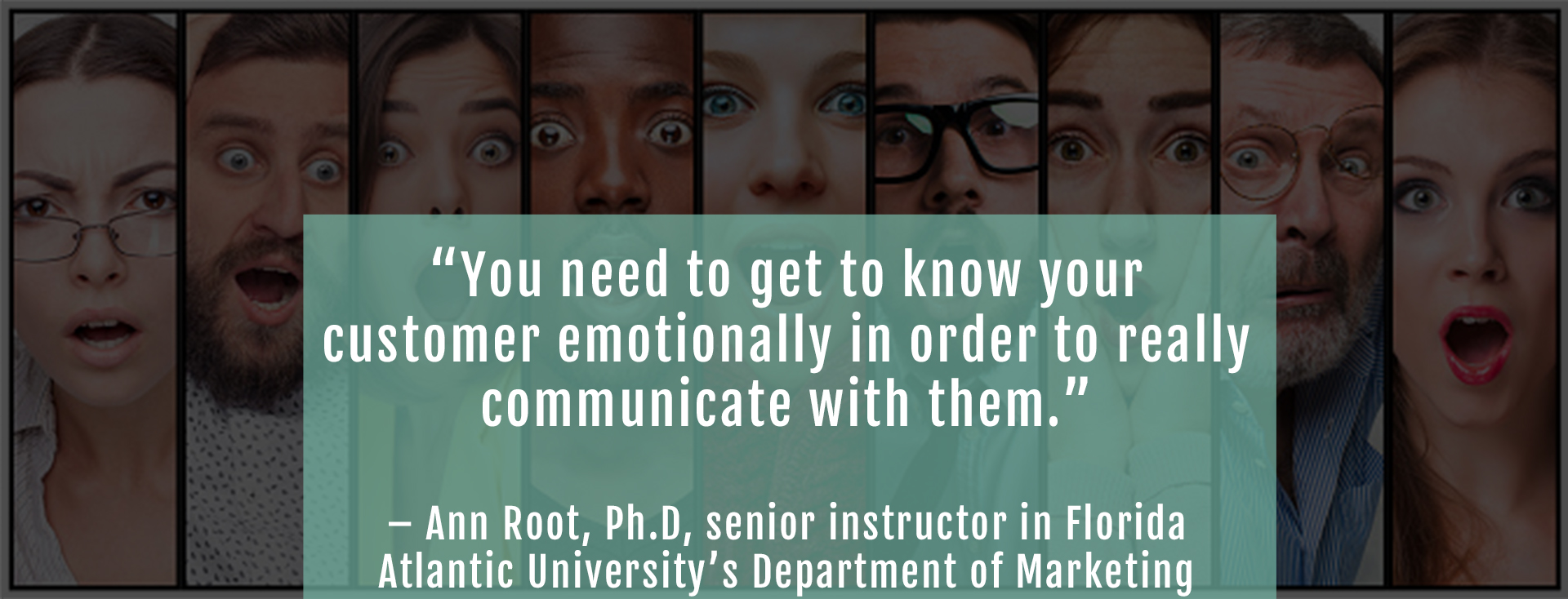“You have a story you’re trying to tell. Your job as a B2B marketer is to make your customer the hero in order for him to vote with his heart, mind and wallet.”
– Deb Gabor, CEO, SOL Marketing
Richie Rich. Dream Deferred Diane. Hipster Harvey. No, these are not colorful nicknames – they’re buyer personas. And they’re imperative for your marketing success.
The notion of using buyer personas to target specific audiences isn’t a new tactic. No matter what you’re selling, the selling process is still the same – you’re selling to humans.
That’s how SOL Marketing’s CEO Deb Gabor sees it, anyway. “It’s come into fashion in the past decade, the idea that B2B customers are still buying things from people,” she says. “B2B marketers tend to be behind the times in regards to marketing techniques and relying on the four P’s of marketing.”
Although B2B marketers may be “behind the times,” that doesn’t mean they can’t propel themselves into the present. Understanding persona-based marketing is all it takes to start targeting the right kinds of customers.
When it comes down to it, selling and marketing boil down to human connection. Ann Root, Ph.D, senior instructor in Florida Atlantic University’s Department of Marketing, says building personas is part of understanding your buyer.

“Since companies are composed of people, and marketing is about problem-solving and building relationships, you need to truly understand your clients and their personal and business lives if you are going to communicate with them effectively and solve their problems,” Root says. “You need to get to know your customer emotionally in order to really communicate with them.”
Gabor says that ultimately, business decision-makers are making decisions not exclusively on cognitive factors. “Ninety-eight percent of what the brain does happens outside of awareness; it happens because of emotion,” she adds.
And successful personas do just that – they tap into the innermost goals, emotions, fears, and thoughts of ideal buyers to better provide them with the solutions they need.
That’s especially true with the bevy of technological assistance and ever-increasing internet metrics available to B2B companies. That’s why there are many ways to improve upon selling tactics and using persona-based marketing to its fullest potential.
Technology is best used for measuring marketing success after you’ve created your personas. In order to create your personas, you’ll need to get your hands dirty.

Creating personas
For Gabor’s team, the first step in creating successful buyer personas is segmentation research that doesn’t only focus on a fake demographic. It digs deeper.
“We’ll look for behavioral attributes, attitudes, buying processes, challenges, customs, and the like,” she says. Her team likes to cast a wide net at the beginning – quantitative research.
Similarly, Root says her starting point is a picture of your ideal customer, then envisioning “a day in the life” of that person. “Tell a story of who they are: age, education, work title, family information, where they live, what keeps them up at night, what is important to them, where do they get news, what do they do for fun,” she says.
She says to imagine you’re an avatar of your customer and describe their life as you visualize it. “You need to ask, most importantly, about their goals and frustrations in life and at work.”
More questions to ask include: What does it say about this person that they use this brand? What’s the singular thing this buyer needs to be able to get from us? How do we make ourselves indispensable?
Doing this research connects people to who most likely needs what the company is selling. The next “layer” of creating personas is what Gabor calls qualitative work, which includes interviews and discussion board research.
Root believes that you’ll need to interview your customers; that is the best way to get into their lives. Use your salespeople. What do they know about your customers? Do some focus groups. Listen on social media channels. Don’t engage, just listen to what they’re talking about. What language do they use?

Conducting qualitative research doesn’t just give you the how, but the why. Gabor says you must look out for common threads and notable characteristics that drive preference for particular B2B brands. Some of these characteristics may be the person’s role in decision-making, the life-cycle stage of the company, behavioral commonalities, and so on.
All of these small details you learn about your ideal customer help you to understand how to appeal to them better. By understanding the language your customers use, for example, you are then able to use those same words in your crafted messaging. Every detail helps make the sale more personal.
Using personas effectively
Once you’ve uncovered your ideal client personas, it’s time to put them to the test. Both Gabor and Root suggest implementing content marketing techniques that use the new persona information. This is where technology comes into play.
“We create scalable digital content for our clients,” Gabor says.
Whether it’s digital advertising, email marketing, social media campaigns or blog posts, each content initiative gives you a chance to hone your company’s digital body language according to the ways people engage with your information and at which point in the buying cycle they do so.
“The cool thing with content marketing is it gives you feedback in real-time,” Gabor says. “We ask ourselves, ‘What kind of content can we use across a decision-making process?’ I love content marketing for refining those personas; they’re so closely intertwined. No amount of research can target exactly how people will behave in the wild.”
And in terms of using personas and content marketing in the B2C versus B2B space, it’s important to realize that the buying processes are different. With consumers, instant gratification reigns. But the business buyer’s process takes much longer; it’s more complex and often includes multiple decision-makers.
Gabor says it requires different information. Because of this, your content marketing must be more strategic than with consumers. You can’t just create content to create content. It must be deliberate.
“You have to have content at every stage of the decision-making funnel for every persona,” Gabor says. “It has to be in the place when people come across it at the moment they need it. They’re not going to make an immediate purchase; it’s not a straight line.”
To truly drive the sale home with personas, it’s important to identify how to best appease the buyer. Gabor says the key question to ask is, “How do we make each individual person the hero in their own story?”
“What you buy is part of what you’re telling the world, a part of your concept,” she says. “You have a story you’re trying to tell. Your job as a B2B marketer is to make your customer the hero in order for him to vote with his heart, mind and wallet.”
By understanding your customer’s goals – both professional and personal—you are able to market the right aspects of your product to them. You can show them how your product will directly affect their own story.
“You can’t take the humanity out of it,” Gabor says.
Infusing humanity into sales means your salespeople need to be abreast of these personas as well. It is a collaborative process that cannot end with sales. In fact, salespeople are those who most importantly need to be utilized in the process. They’re the ones directly connecting with those “personas,” but they’re no longer dealing with the idea of a person – these are real humans on the other end of the phone or email. Your customers need to be treated like the personas you created; speak to their goals, frustrations, and what makes them the hero in their own story.
Because everyone wants to be a hero, and you can write their happy ending for them. The bonus is your happy ending, too.
SIDEBAR
5 Keys To Building the Perfect Buyer Persona
- Cast a wide net with quantitative research in order to develop a basic understanding of your customers
- Do focus groups, pay attention to social media channels and interview customers to get a qualitative, more personalized, view of who they are.
- Detail “a day in the life” of your personas to uncover goals, frustrations, and personality traits.
- Infuse humanity into your sales by keeping your salespeople abreast of the personas you are developing.
- Everyone wants to be a hero. Make the buyer the hero of their own story.

